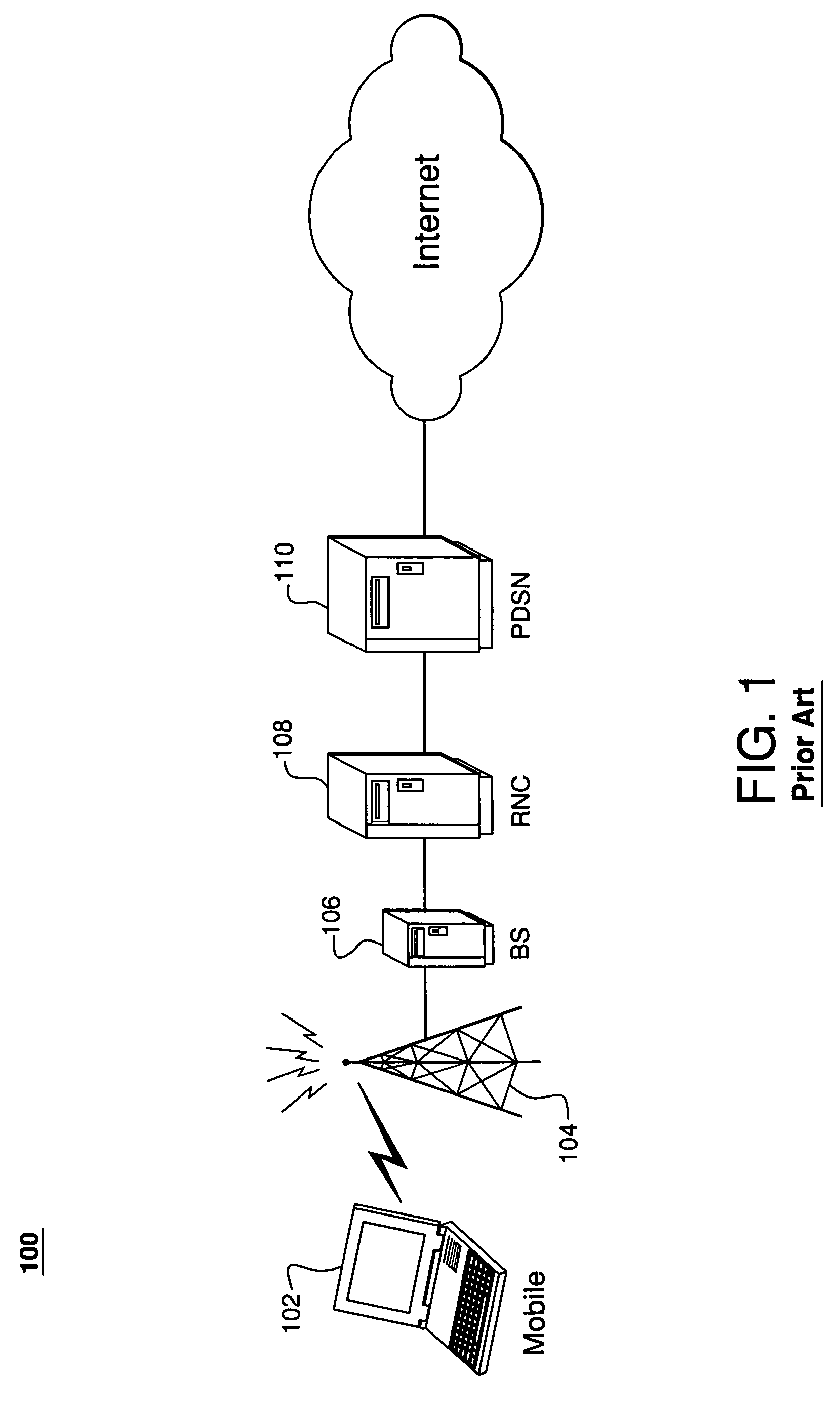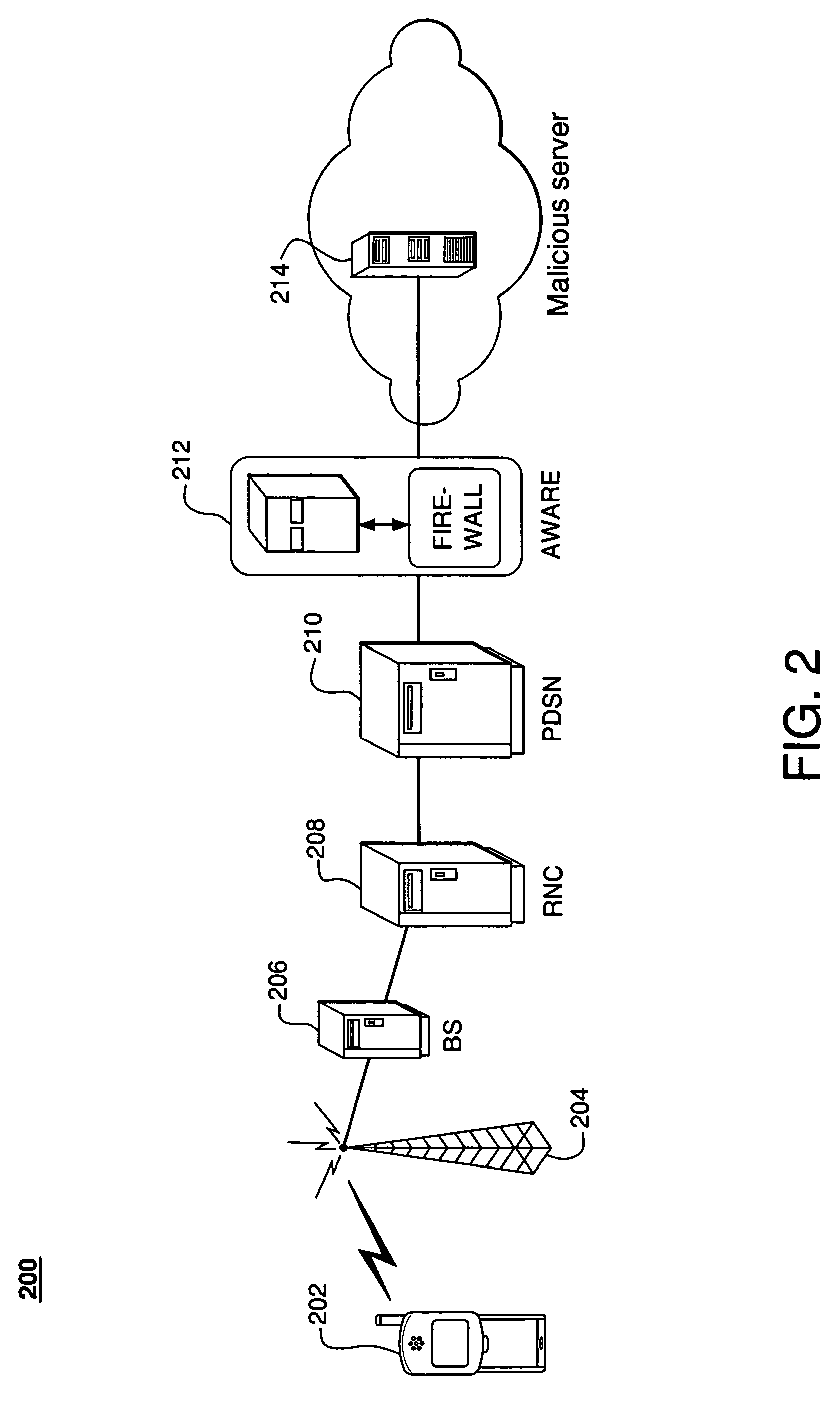Detection of power-drain denial-of-service attacks in wireless networks
a technology of wireless network and power drain, applied in the field of communication networks, can solve the problems of traffic invariably disabling the operation of the node, the frequency and magnitude of attacks directed at internet resources, and the significant challenge of network operators
- Summary
- Abstract
- Description
- Claims
- Application Information
AI Technical Summary
Benefits of technology
Problems solved by technology
Method used
Image
Examples
Embodiment Construction
[0026]Reference herein to “one embodiment” or “an embodiment” means that a particular feature, structure, or characteristic described in connection with the embodiment can be included in at least one implementation of the invention. The appearances of the phrase “in one embodiment” in various places in the specification are not necessarily all referring to the same embodiment, nor are separate or alternative embodiments necessarily mutually exclusive of other embodiments.
[0027]Introduction
[0028]FIG. 1 illustrates exemplary wireless network 100 of the prior art. Wireless network 100 includes mobile (e.g., laptop or cell phone) 102, cell tower 104, base station (BS) 106, radio network controller 108, and Packet Data Serving Node (PDSN) 110.
[0029]During normal operation, mobile 102 communicates with PDSN 110 via cell tower 104, BS 106, and RNC 108 to authenticate and register itself with the network. PDSN 110 is fundamentally a router that functions as the gateway for data flow to and ...
PUM
 Login to View More
Login to View More Abstract
Description
Claims
Application Information
 Login to View More
Login to View More - R&D
- Intellectual Property
- Life Sciences
- Materials
- Tech Scout
- Unparalleled Data Quality
- Higher Quality Content
- 60% Fewer Hallucinations
Browse by: Latest US Patents, China's latest patents, Technical Efficacy Thesaurus, Application Domain, Technology Topic, Popular Technical Reports.
© 2025 PatSnap. All rights reserved.Legal|Privacy policy|Modern Slavery Act Transparency Statement|Sitemap|About US| Contact US: help@patsnap.com



